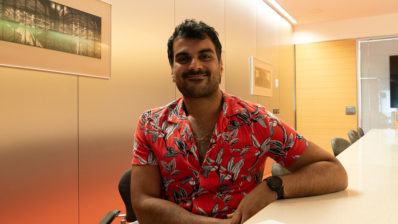Increasingly, the scientific community is clear that teamwork is needed to move forward. Therefore, in order to achieve the ambitious goal of sequencing the genome of all the eukaryotic species that inhabit the planet Earth, the Earth Biogenome Project (EBP) has been developed.
“The EBP is an umbrella project that groups several working nodes that, with either a taxonomic or geographical orientation, aim to obtain high quality genomes of the different species that inhabit the planet,” says Roderic Guigó, head of the computational biology of RNA processing group, coordinator of the bioinformatics program at the Center for Genomic Regulation (CRG) and professor in the Department of Experimental and Health Sciences, Pompeu Fabra University (DCEXS-UPF).
Indeed, the EBP integrates various projects or working nodes that are organized on a small or large scale and provide funding. These can be focused on:
- Organisms: such as the vertebrate genome project (VGP), which is focused on vertebrates, or I5K focused on insects.
- Regions: such as the Darwin Tree of Life, in the British Isles; the Catalan EBP initiative in the Catalan Countries or the European Reference Genome Atlas (ERGA) throughout Europe.
In addition, the EBP wants to “establish a way of working so that all genomes have the same quality standards”, explains Rosa Fernández, head of the metazoa phylogenomics lab of the Institute of Evolutionary Biology (IBE: CSIC-UPF).
EBP was born with three clear objectives:
- to know the biodiversity of the Earth in order to protect it
- to understand how ecosystems work
- to gain benefits for human well-being
But researchers see even more advantages. “EBP will allow us to learn a lot,” explains Rosa Fernández with emotion. For many years, “a lot of genetic techniques have been developed to study in depth the species that generate the most interest: model organisms and vertebrates. And now it’s time to apply all these tools to other species,” says the evolutionary biologist.
According to Fernández, we do not know many of the species that are key to the maintenance of ecosystems, such as earthworms, only because “they are unattractive to the general public and only a few scientists work with them.”
The time has come to apply the genetic tools and techniques that have been developed in recent years to other species, beyond model organisms and vertebrates.
Rosa Fernández (IBE)
Catalonia leads a powerful local initiative
This year, the phylogeny group of metazoans led by Rosa Fernández, has won one of the eight scholarships called by the Catalan Society of Biology to promote the Catalan biogenome project, one of the geographical orientation initiatives within the EBP that aims to sequence all the eukaryotic species of the Catalan Countries. With this help, they will be able to sequence the genome of Norana najaformis“, a species of giant earthworm that has a very small distribution in the Ordal in Catalonia,” explains the director of the lab.
Today, the Catalan initiative “actively employs institutes in Valencia, the principality of Catalonia, northern Catalonia, Andorra and Mallorca”, explains Roderic Guigó. The fact is that there has been a very good reception of the project in the territory, thanks to “the great naturalist hobby that exists in the country.” But the bioinformatician highlights other aspects that make the Catalan initiative have a great impact. “The situation of Catalonia between the Mediterranean and the Pyrenees means that it has a great wealth of species. Despite being a small territory, about 30% of the species that can be found in Europe live here. And, in addition, here we have the right infrastructures to be able to produce high quality genomes, such as the Centro Nacional de Análisis Genómico (affiliated to the CRG; CNAG-CRG) and the Barcelona Supercomputing Center. ”
ERGA, the European initiative
Last October, representatives from various European countries created the ERGA, the European reference atlas of genomes, a major initiative to contribute to EBP at the European level. And Rosa is one of the two Spanish representatives who participates in the council. She explains that “in a short time we are more than 500 members among experts in taxonomy, sequencing and computing who work in a connected and coordinated way to generate productive networks and add to each other’s scientific knowledge.”
Although the project is very young, ERGA has already begun work on a first pilot project that has focused on “nematomorphs, a very unknown phylum of which not even their position in the tree of life is known”, explains Fernández.
The keys to getting a good sequence
All EBP working nodes have a common goal: to obtain high-quality genomes from as many species as possible. That is why improving the technique has been key. “Genome sequencing technology has improved a lot in the last decade,” says Tyler Alioto, head of the CNAG-CRG genome annotation and assembly group. “Ten years ago, we could only sequence fragments a few hundred bases long, and now we sequence regions of hundreds of thousands of bases.” And having larger regions makes it easier to assemble those regions into the genome.
Tyler explains that “a decade ago assembling the genome was like making a puzzle with 5,000 very small pieces.” If the genome were a landscape puzzle, “you would have had a lot of blue pieces with a piece of sky.” Now, the pieces are bigger and more unique and apart from a piece of sky there is a part of a tree or a mountain. Therefore, it is easier to sort this puzzle. ”
“A decade ago assembling the genome was like making a puzzle of 5,000 very small pieces. Now, the pieces are bigger and more unique and it’s easier to sort the puzzle”
Tyler Alioto; CNAG-CRG
However, in the process of sequencing quality genomes, there are still three bottlenecks. “The first is to properly identify and classify species. That’s why good taxonomists are needed. Second, the key is to preserve the samples well enough to extract high-quality DNA. And the third, to be able to sequence longer and longer regions to be able to assemble them easily “, explains Alioto.
EBP applications
Some may wonder if this effort at international communication and cooperation makes sense just to have a library of genomes of eukaryotic species. But having these genomes is only the first step to better understanding and preserving biodiversity.
According to Fernández, “having genomes allows us to compare the genetic parts of different species and understand how genes have evolved.” But this tool is not just for studying evolution. Alioto adds that “sequencing the genomes of several individuals in a population is a good tool for understanding whether a species is endangered, why it is so, and then being able to take steps to recover it.”
“We are experiencing a mass extinction due to human activity. That is why we have the opportunity and the obligation to do everything possible to preserve biodiversity. “
Tyler Alioto; CNAG-CRG
And not just that. Looking to the future, “an area that is just beginning now, although it is a bit controversial, is to use genetic technologies to conserve species,” explains Guigó. An example is Australia, where there are no native species of toxic toads. In 1935, the giant toad was introduced. An animal that, in the face of threat, releases a toxin that causes cardiac arrest in its predators, which then die. Using CRISPR technology, Australian scientists “detoxified” toads to stop the effects on native wildlife caused by this amphibian.
Either way, what is not known cannot be protected. That’s why it’s worth “closing the black hole due to the lack of information we have about natural history,” Fernández concludes.







